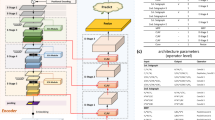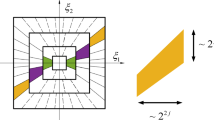Abstract
The infrared thermal imager presents unique advantages in plate fault detection and prediction. However, during the data collection process, three abnormal conditions can result in anomalies and defects in the temporal data. To address this, a defect data compensation model based on bidirectional LSTM is proposed in this paper. The average gray value (AGV) of the plate in the infrared image is employed to represent the working state of the plate, serialized into time series data. To tackle the abnormality and defect issues in the sequential data, four methods are employed to complete the sequential data. Leveraging the strong correlation among time series data, this paper integrates a bidirectional LSTM with attention mechanism (Bi-AM-LSTM) to establish a defect data compensation model. This model compensates for abnormal and defective data, effectively enhancing the reliability and integrity of time series data. Experimental results demonstrate that the model achieves better training results when using the method of replacing the original value with the B-channel value in the RGB three channel. Moreover, when compared with other models, the proposed model exhibits the most effective data compensation.











Similar content being viewed by others
Data availability
The data that support the findings of this study are available upon reasonable request from the authors.
References
L. Ding, J. Cheng, T. Wang, J. Zhao, C. Chen, and Y. Niu, Miner. Eng. 135, 21 (2019).
M. Moats and M. Free, JOM 59, 34 https://doi.org/10.1007/s11837-007-0128-y (2007).
P.E. Aqueveque, E.P. Wiechmann, and R.P. Burgos, In 2007 IEEE Industry Applications Annual Meeting (2009), pp 1225–1231.
A.S. Morales, E.P. Wiechmann, P. Aqueveque, and E. Pino, In Industry Applications Society Meeting (2010).
X. Zhang, J. Saniie, and A. Heifetz, JOM 72, 4244 https://doi.org/10.1007/s11837-020-04428-6 (2020).
G. Zhou, In 2020 International Conference on Computer Communication and Network Security (CCNS) (2020), pp 178–183.
V. Naidoo and S. Du, Electronics. https://doi.org/10.3390/electronics11213465 (2022).
H.R. Kwon and P.K. Kim, Information 12, 341 https://doi.org/10.3390/info12090341 (2021).
S. Jahandari and D. Materassi, In 2017 American Control Conference (ACC) (2017), pp 1085–1090.
K. Greff, R.K. Srivastava, J. Koutník, B.R. Steunebrink, and J. Schmidhuber, IEEE Trans. Neural Netw. Learn. Syst. 28, 2222–2232 https://doi.org/10.1109/TNNLS.2016.2582924 (2017).
T.N. Sainath, O. Vinyals, A. Senior, and H. Sak, In 2015 IEEE International Conference on Acoustics, Speech and Signal Processing (ICASSP) (2015), pp 4580–4584.
J. Schmidhuber, Neural Netw. 61, 85 https://doi.org/10.1016/j.neunet.2014.09.003 (2015).
J.W. Belmont and R.A. Gibbs, Am. J. Pharm. 4, 253 https://doi.org/10.2165/00129785-200404040-00005 (2004).
J. Yue, W. Zhao, S. Mao, and H. Liu, Remote Sens. Lett. 6, 468 https://doi.org/10.1080/2150704X.2015.1047045 (2015).
A. Kumar, J. Kim, D. Lyndon, M. Fulham, and D. Feng, IEEE J. Biomed. Health Inform. 21, 31 https://doi.org/10.1109/JBHI.2016.2635663 (2017).
D.W. Otter, J.R. Medina, and J.K. Kalita, IEEE Trans. Neural Netw. Learn. Syst. 32, 604 https://doi.org/10.1109/TNNLS.2020.2979670 (2021).
S. Wu, K. Roberts, S. Datta, J. Du, Z. Ji, Y. Si, S. Soni, Q. Wang, Q. Wei, Y. Xiang, B. Zhao, and H. Xu, J. Am. Med. Inform. Assoc. 27, 457 https://doi.org/10.1093/jamia/ocz200 (2020).
S. Ren, K. He, R. Girshick, and J. Sun, IEEE Trans. Pattern Anal. Mach. Intell. 39, 1137 https://doi.org/10.1109/TPAMI.2016.2577031 (2017).
L. Huang, C. Chen, J. Yun, Y. Sun, J. Tian, Z. Hao, H. Yu, and H. Ma, Front. Neurorobotics 16, 881021 https://doi.org/10.3389/fnbot.2022.881021 (2022).
P. Zhang, J. Xue, C. Lan, W. Zeng, Z. Gao, and N. Zheng, IEEE Trans. Image Process. https://doi.org/10.1109/TIP.2019.2937724 (2019).
Y. Bengio, P. Simard, and P. Frasconi, IEEE Trans. Neural Netw. 5, 157 https://doi.org/10.1109/72.279181 (1994).
Y. Yu, X. Si, C. Hu, and J. Zhang, Neural Comput. 31, 1235 https://doi.org/10.1162/neco_a_01199 (2019).
D. Monner and J.A. Reggia, Neural Netw. 25, 70 https://doi.org/10.1016/j.neunet.2011.07.003 (2012).
K. Wang, C. Ma, Y. Qiao, X. Lu, and S. Dong, Phys. A Stat. Mech. Appl. 583, 126293 (2021).
L. Gao, Z. Guo, H. Zhang, X. Xu, and H.T. Shen, IEEE Trans. Multimed. 19, 2045 (2017).
X. Ran, Z. Shan, Y. Fang, and C. Lin, Sensors 19, 861 (2019).
V.K. Jeevitha and M. Hemalatha, In 2020 International Conference for Emerging Technology (INCET), (2020).
H. Choi, K. Cho, and Y. Bengio, Neurocomputing 284, 171–176 (2018).
F. Shahid, A. Zameer, and M. Muneeb, Chaos Solitons Fract. 140, 110212 https://doi.org/10.1016/j.chaos.2020.110212 (2020).
Acknowledgements
This work is supported in part by the National Natural Science Foundation of China (Grant No. 92167105) and in part by the Project of State Key Laboratory of High-Performance Complex Manufacturing, Central South University (Grant No. ZZYJKT2022-14).
Author information
Authors and Affiliations
Corresponding author
Ethics declarations
Conflict of interest
On behalf of all authors, the corresponding author states that there is no conflict of interest.
Additional information
Publisher's Note
Springer Nature remains neutral with regard to jurisdictional claims in published maps and institutional affiliations.
Rights and permissions
Springer Nature or its licensor (e.g. a society or other partner) holds exclusive rights to this article under a publishing agreement with the author(s) or other rightsholder(s); author self-archiving of the accepted manuscript version of this article is solely governed by the terms of such publishing agreement and applicable law.
About this article
Cite this article
Cheng, F., Peng, L., Zhu, H. et al. A Defect Data Compensation Model for Infrared Thermal Imaging Based on Bi-LSTM with Attention Mechanism. JOM 76, 3028–3038 (2024). https://doi.org/10.1007/s11837-024-06408-6
Received:
Accepted:
Published:
Issue Date:
DOI: https://doi.org/10.1007/s11837-024-06408-6




